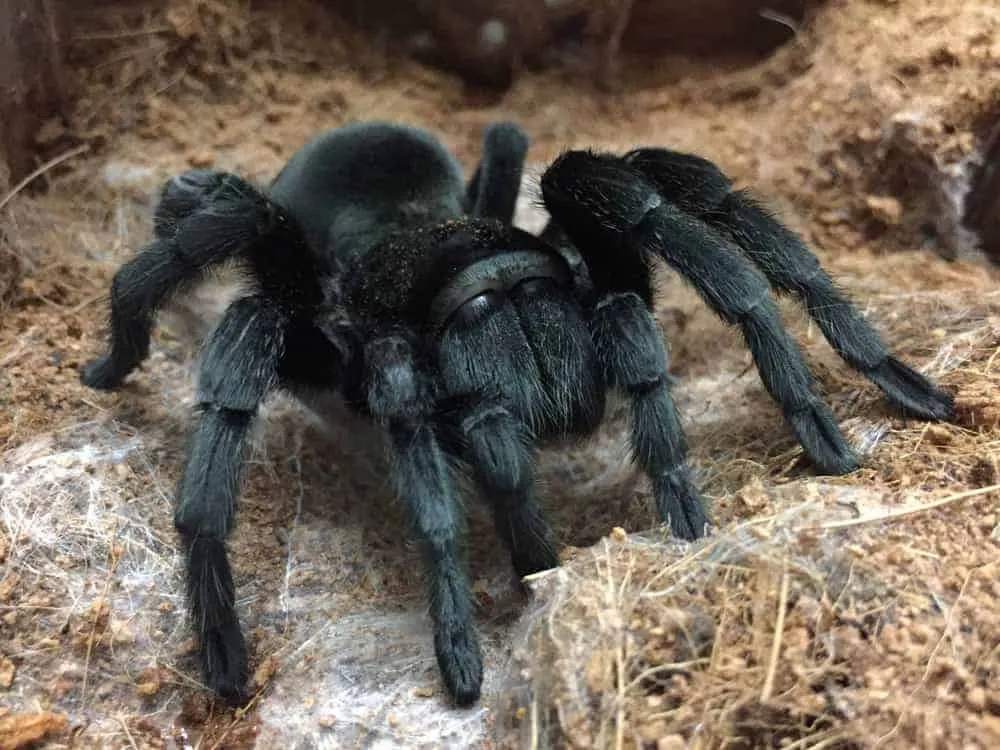What is a Texas Black Tarantula
The Texas Black Tarantula (Aphonopelma hentzi) is a fascinating arachnid native to the United States, primarily found in Texas and surrounding states. Known for its striking black coloration and relatively docile temperament, this spider has become a popular subject of interest for both researchers and hobbyists. These creatures play a vital role in their ecosystems, helping to control insect populations. Their presence often goes unnoticed, yet they contribute significantly to the balance of nature. Understanding the characteristics and behaviors of the Texas Black Tarantula is crucial for anyone interested in the natural world or considering keeping one as a pet. It’s a creature that deserves respect and appreciation.
Appearance and Identification
Identifying a Texas Black Tarantula correctly requires careful observation of its physical features. Several characteristics set it apart from other tarantula species and spiders. Their size, coloration, and specific markings are key to accurate identification. The more familiar you become with these details, the better equipped you’ll be to recognize these magnificent creatures in their natural habitat or when considering one as a pet.
Size and Physical Features
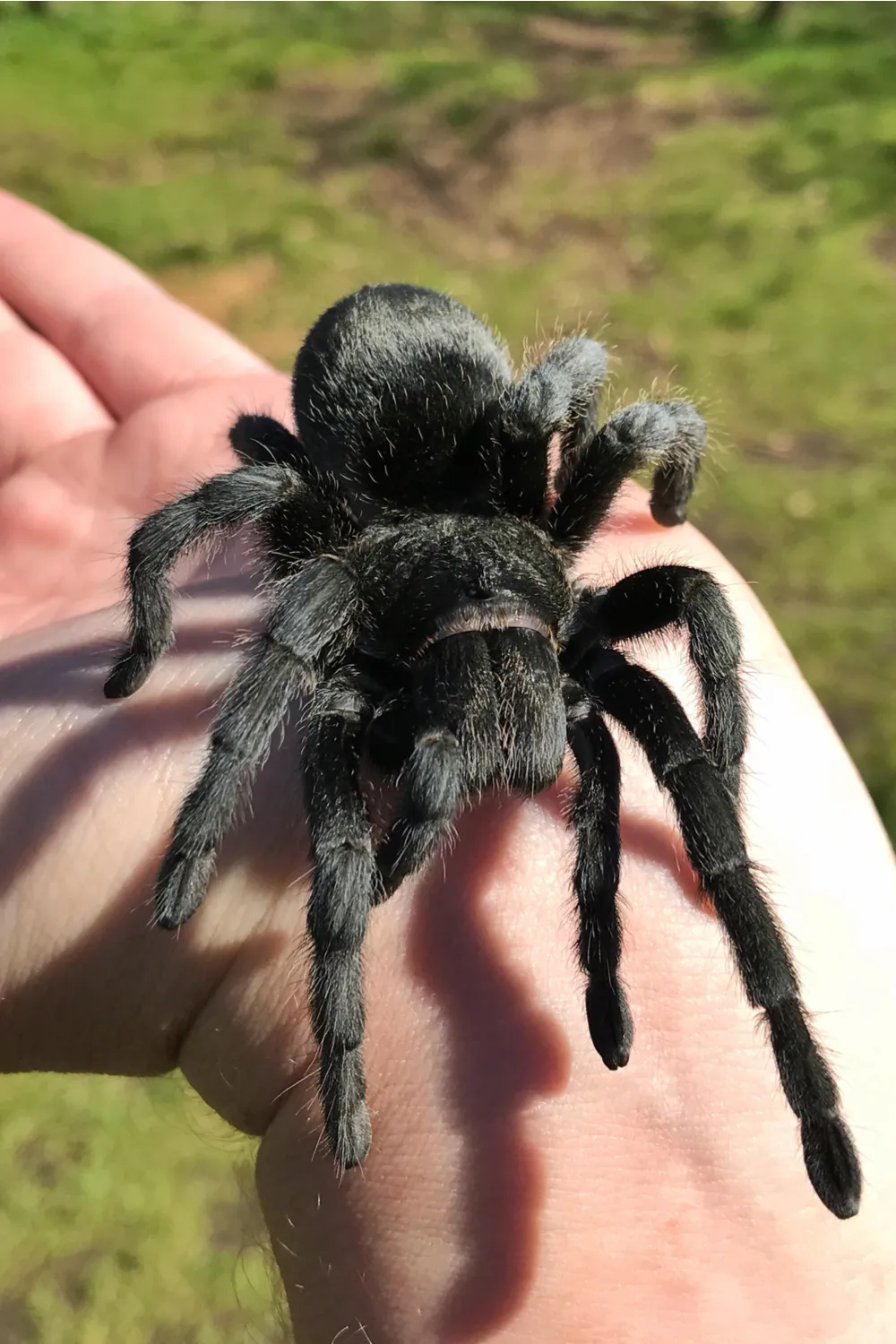
Texas Black Tarantulas, like all tarantulas, exhibit sexual dimorphism, meaning males and females have distinct size differences. Mature females tend to be larger, with a leg span that can reach up to 5-6 inches. Males are generally smaller, often with a leg span of 4-5 inches. The body, covered in dense hairs, is divided into two main sections: the cephalothorax (head and thorax combined) and the abdomen. Their eight legs are strong and hairy, perfectly adapted for burrowing, climbing, and hunting. Observe the size difference and overall body proportions when trying to identify a Texas Black Tarantula.
Coloration and Markings
As the name suggests, the Texas Black Tarantula is predominantly black. This color is not always uniform; some individuals may exhibit shades of dark brown or gray, particularly on their legs. The coloration is most intense in mature adults, with juveniles often appearing a lighter shade. Look closely for subtle markings or patterns. Some individuals have faint hair patterns on their abdomen or legs. These markings are a valuable clue in identification. While their primary color is black, the presence of additional details helps ensure a positive identification of this species.
Habitat and Distribution
Understanding the Texas Black Tarantula’s habitat and distribution is key to finding and identifying these spiders. Knowing where they live, what environments they prefer, and the geographical areas where they are most commonly found will greatly improve the chances of encountering one. Their presence in a specific location also highlights the local ecosystem’s health and balance, making this knowledge essential for anyone interested in these creatures or their environment.
Geographical Range
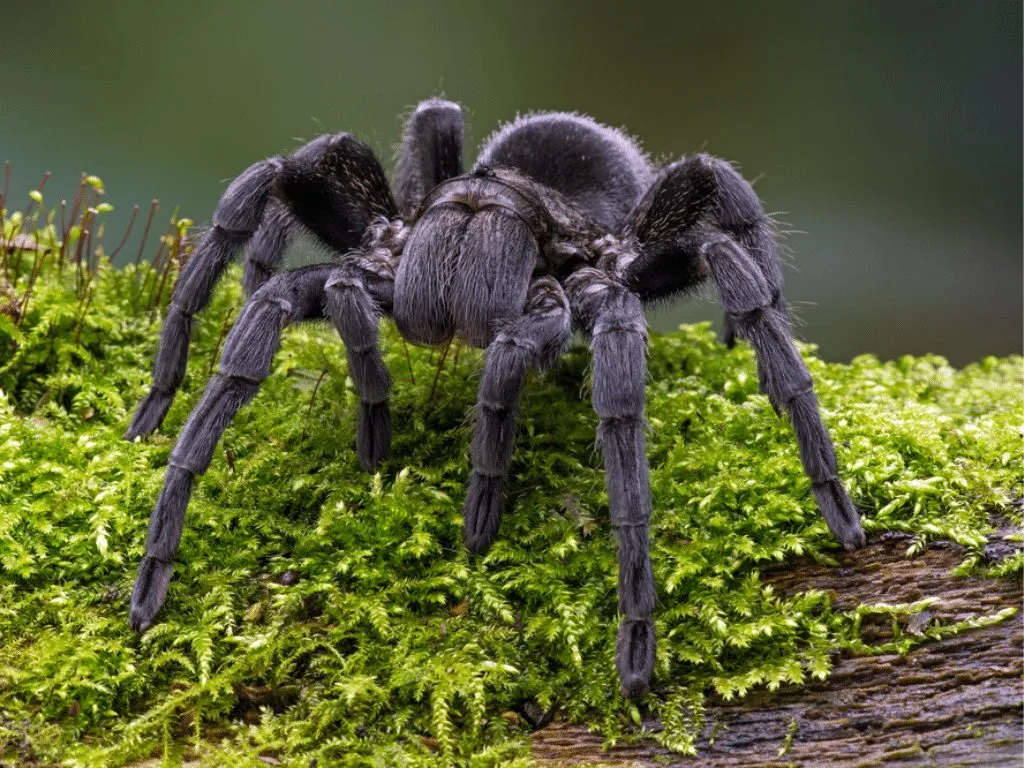
The Texas Black Tarantula is primarily found in the southwestern United States. Their range includes the state of Texas, as well as parts of Oklahoma, Arkansas, Louisiana, and New Mexico. Within Texas, they are widely distributed but are most abundant in the central and western regions. They can also be found in disturbed habitats, often near human settlements. When searching for these spiders, focus your efforts on areas within this range, especially during the appropriate season when the weather conditions and breeding cycles are most favorable.
Preferred Habitats
Texas Black Tarantulas favor dry, open habitats. They are often found in grasslands, prairies, and scrublands. These spiders are adept at burrowing, creating their homes in the ground. They often choose areas with well-drained soil to prevent flooding in their burrows. Look for them near rocks, under logs, or in areas with sparse vegetation. The presence of these features provides shelter and helps to maintain the right temperature and humidity levels. They usually come out at dusk or during the night.
Behavior and Temperament
Understanding the behavior and temperament of the Texas Black Tarantula is essential for responsible observation or pet ownership. Their interactions with their environment, defensive strategies, and activity patterns give clues to their survival. Knowing their behaviors also provides insight into their needs, such as the appropriate environment for an enclosure, and safe practices for handling. Paying attention to their typical actions is fundamental for anyone who is interested in or interacts with these creatures.
Defensive Mechanisms
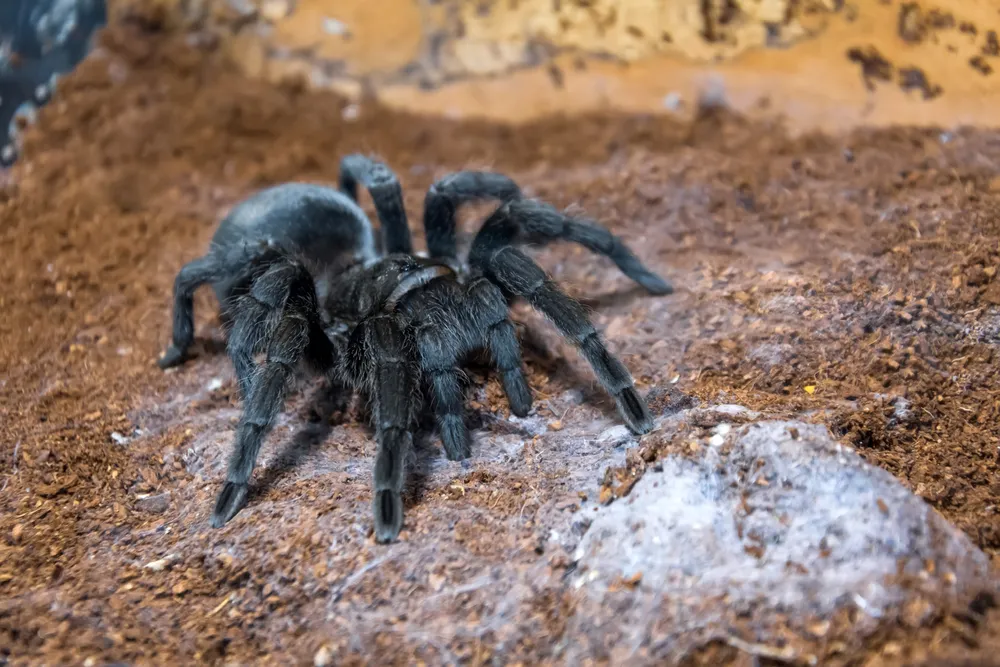
Texas Black Tarantulas, despite their relatively docile nature, possess defensive mechanisms. When threatened, they may initially try to escape by running away or retreating into their burrows. If cornered, they can raise their front legs, displaying their fangs in a threat posture. They also have urticating hairs on their abdomen, which they can flick towards predators. Contact with these hairs can cause skin irritation and discomfort. While they do have venom, it is not considered to be highly dangerous to humans. The majority of bites result in only minor localized symptoms. Understanding these defensive methods is vital for handling these spiders properly.
Activity Patterns
Texas Black Tarantulas are primarily nocturnal, meaning they are most active during the night. They spend most of the day inside their burrows, emerging at dusk to hunt and search for mates (particularly males). They are ambush predators and will wait near the entrance of their burrows. When a suitable prey item ventures nearby, they strike quickly. During the mating season, male tarantulas become more active, often wandering in search of females. Seasonal changes also affect their activity levels; for example, they tend to be less active during colder months, slowing down their metabolism and conserving energy.
Identifying a Texas Black Tarantula
Identifying a Texas Black Tarantula involves combining visual and behavioral observations. Knowing their distinct features and comparing them with other species, alongside paying attention to the spider’s gender, enhances the identification. The process can be greatly enhanced by familiarity with their key characteristics.
Distinguishing Features
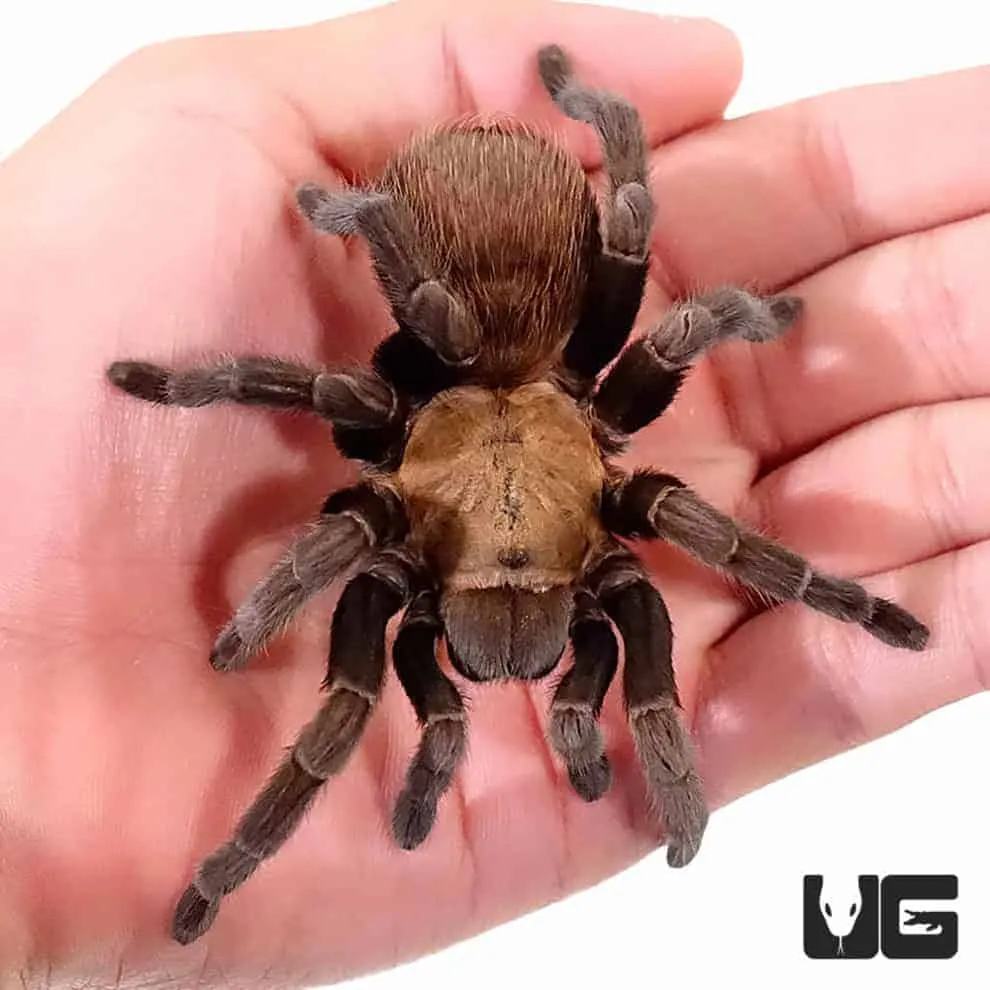
Key features help in the identification. Their size, coloration, and overall appearance are essential. Look for the solid black coloration of the body and legs. The presence or absence of any markings is also a key. Examine the leg span, with mature females usually larger than males. Note the size and proportions of the cephalothorax and abdomen. Knowing these details will help differentiate a Texas Black Tarantula from other spider species. The details of their physical characteristics are very important.
Comparison with Similar Species
It’s essential to distinguish Texas Black Tarantulas from other tarantula species. Several similar species are in the same geographical areas. For instance, the Oklahoma Brown Tarantula (Aphonopelma anax) can have a similar appearance, but usually with brown legs. The Texas Tan Tarantula (Aphonopelma marxi) is another species, also often found in Texas. It has a tan color. Compare the size, color patterns, and hair density to distinguish between them. Careful observation and comparison with photographic guides can assist in identifying and avoiding misidentification.
How to Identify the Gender of a Tarantula
Determining the gender of a Texas Black Tarantula, or any tarantula, requires a closer look. The most reliable method involves examining the underside of the spider’s body. Males typically have a modified pair of pedipalps (small appendages near the mouth), which look like boxing gloves. These are used for mating. Males also have a small spur on their front legs. Females do not have these modifications. In addition, males are often smaller than females, especially after their final molt. The easiest way to determine gender is through a molt. During the molt, the gender can be identified by examining the shed exoskeleton under a magnifying glass.
Care and Handling
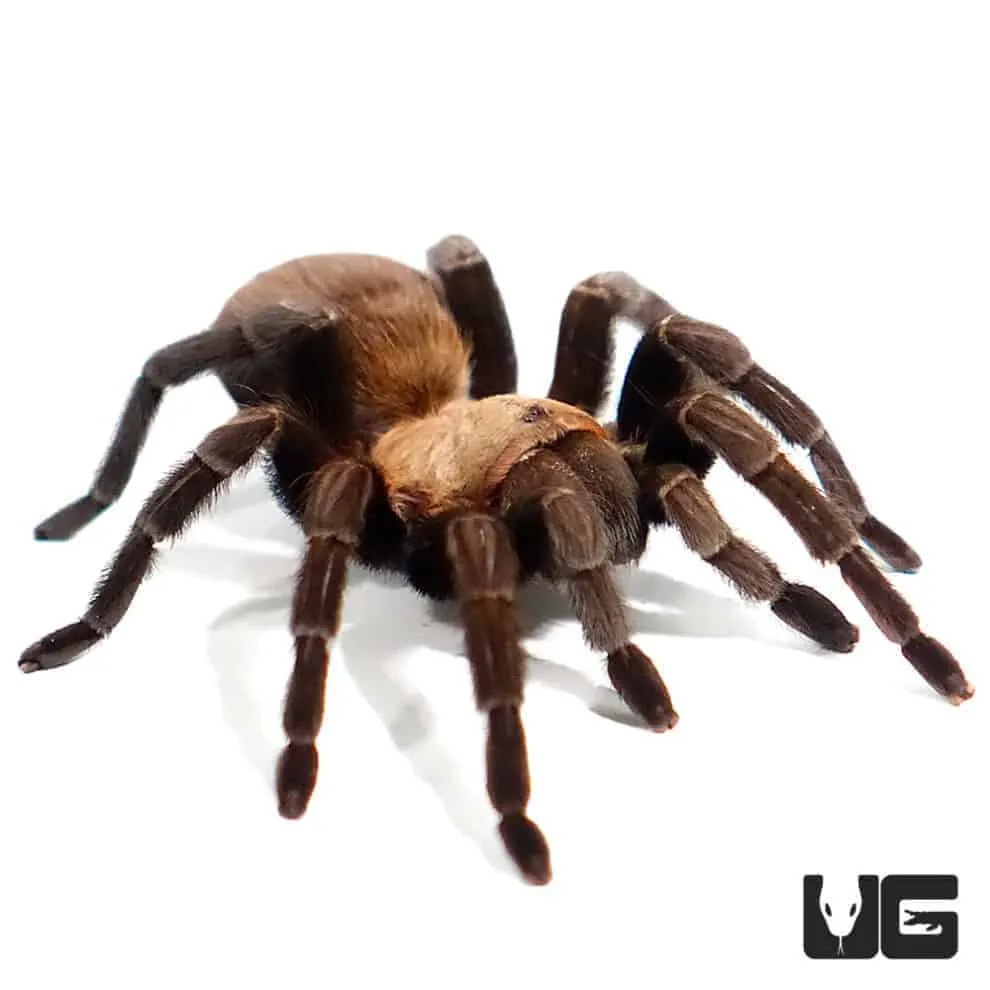
If you’re considering keeping a Texas Black Tarantula as a pet or observing one, it’s crucial to understand the care and handling requirements. These spiders have specific needs regarding feeding, enclosure, and environmental conditions. By providing proper care, you can ensure their health and well-being. Handling tarantulas safely and respectfully is essential for minimizing risk and promoting a positive experience.
Feeding and Diet
The Texas Black Tarantula’s diet consists primarily of insects. Crickets, mealworms, and roaches are excellent food sources. Juvenile tarantulas should be fed more frequently, about every two or three days, while adults can be fed once or twice a week. The size of the prey should correspond to the size of the tarantula. Avoid overfeeding, which can lead to health issues. Always provide a shallow water dish for hydration, and ensure the water is always clean. The availability of food and water is essential for a tarantula’s survival and health. It is important to watch your pet eat to ensure it does.
Enclosure and Environment
An appropriate enclosure is critical for the health and well-being of a Texas Black Tarantula. A glass or plastic terrarium of a suitable size should be provided. Juveniles can be housed in smaller enclosures and transferred as they grow. The enclosure should include substrate, such as coconut fiber or peat moss, to allow burrowing. Maintain a moderate humidity level by misting the enclosure, ensuring that it does not become overly wet. Provide a hide, such as a piece of cork bark or a small plant pot, where the tarantula can retreat and feel safe. Maintaining the enclosure’s temperature between 75 and 85 degrees Fahrenheit (24 to 29 degrees Celsius) is also important.
Health and Lifespan
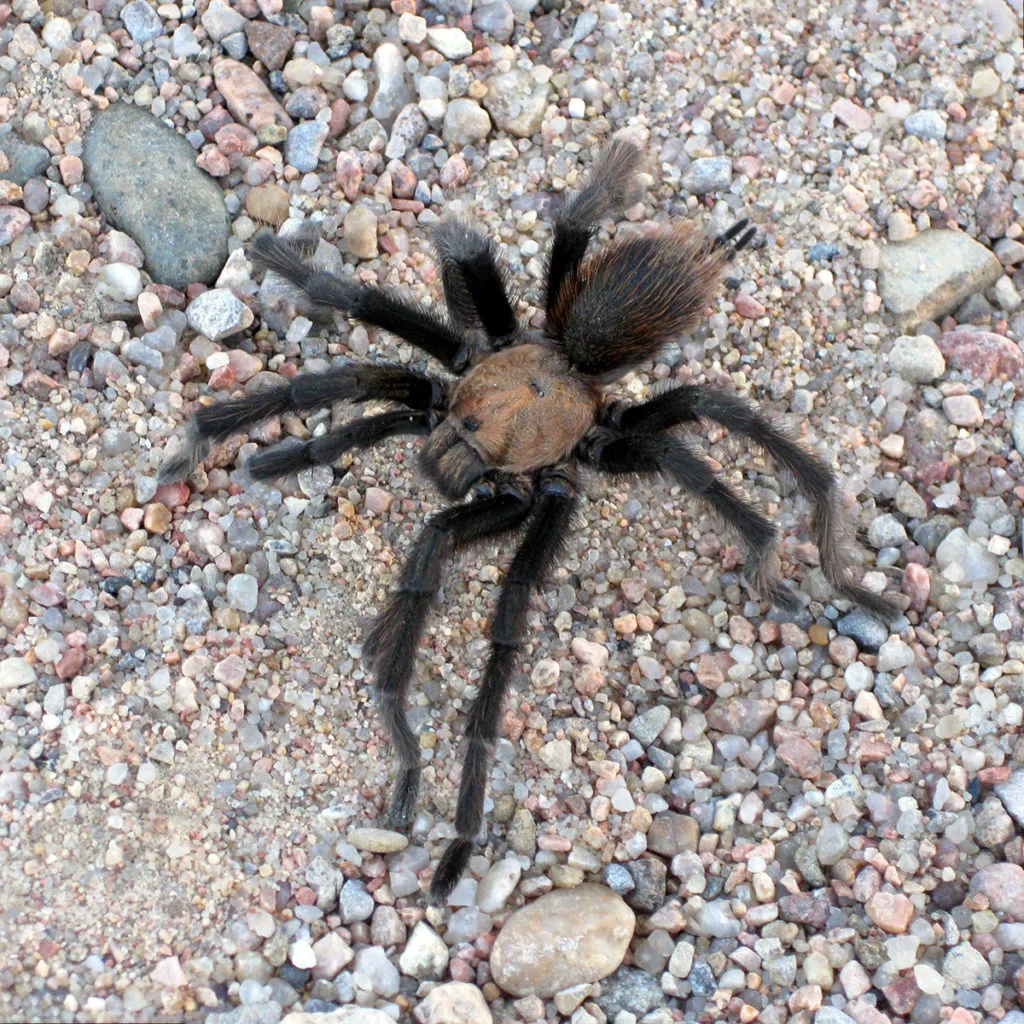
Texas Black Tarantulas have a long lifespan, particularly females, who can live up to 20-25 years in captivity. Males generally have a shorter lifespan, typically only surviving for several years after reaching maturity. Common health issues include molting problems, dehydration, and parasitic infestations. Providing proper care, including a balanced diet, suitable enclosure conditions, and consistent humidity, can minimize health issues. Regular observation can help detect health issues early. With proper care, a Texas Black Tarantula can thrive, offering years of enjoyment and fascination to its keeper.
